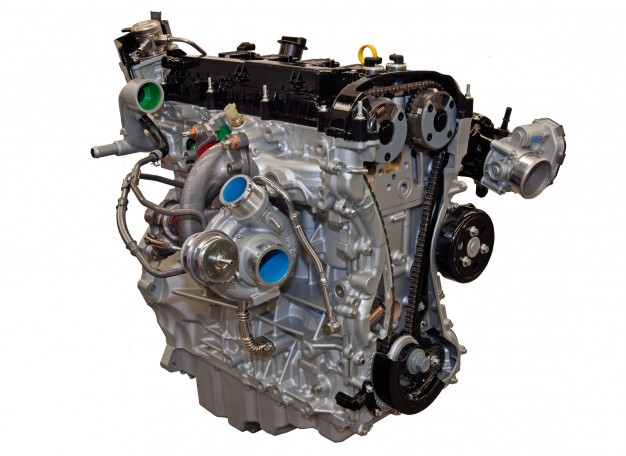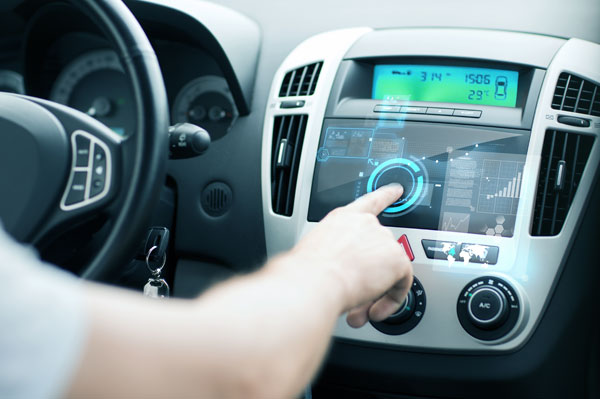There are a huge number of different turbochargers in use on diesel and petrol engines across a wide range of industries and applications. Whilst all these turbochargers are slightly different in terms of their size, shape and configuration, they all work in the same way, and share the same basic parts.
In this post, you’ll learn more about the different parts and components that make up a turbocharger, and find out what it is they do.
Compressor Housing
The compressor housing is where clean air is gathered and compressed before being forced into the engine – it houses the compressor wheel.
On modern turbochargers, this is usually manufactured from aluminium, and typically features a ‘volute’ or spiral shaped design, which helps to provide optimum airflow and air pressure to the engine.
Compressor Wheel
The compressor wheel sits inside the compressor housing, and is usually manufactured from lightweight aluminium. During operation, this wheel spins at high speed, pulling in air, before compressing and pressurising it, and forcing this air through the spiral shaped compressor housing and into the engine.
Compressor Piston Ring
This circular piston ring provides a flexible seal between the thrust collar and the back plate of the turbocharger. It’s a small but vital bit of the turbocharger that provides oil control, and prevents contaminants from getting into the bearing system from the compressor.
Back Plate
Also known as the seal plate – this plate connects the bearing housing to the compressor housing, and acts as a retaining device for the thrust bearing system. The back plate serves as a sealed barrier, which prevents compressed air from entering the bearing housing.
Bearing Housing
Just as the name suggests, the bearing housing houses the thrust bearing and journal bearings, and provides them with the oiling circuits so that they can operate freely. In some turbochargers, the bearing housing also houses a water-cooling system. Bearing housings are typically manufactured from heavyweight cast iron.
Thrust Bearing
The thrust bearing is located inside the bearing housing, and is used to control axial movement (in and out movement) in the turbine shaft between the compressor wheel and the turbine wheel. Because the turbine and compressor wheels rotate at high speeds, the thrust bearings need to be well lubricated with oil to eliminate friction, and prevent wear.
Journal Bearing
Also located inside the bearing housing, the journal bearings control the radial load. In practice, this means that they ensure that the rotating parts of the turbo (the turbine wheel, shaft and compressor wheel) are supported and able to spin freely, without wobbling up and down too much. Journal bearings are held in place with bearing clips.
Heat Shield
This is located at the back of the bearing housing in-between the bearing housing and back face of the turbine wheel, protecting the turbocharger parts from the heat of the exhaust gases running through the exhaust housing.
Turbine Housing
Typically made from cast iron, or a high temperature alloy, the turbine housing is used to collect exhaust gases from the engine, before funnelling them towards the turbine wheel, so that it can rotate. Like the compressor housing, it features a “volute”, spiral design to help maximise the speed of the exhaust gases running through it.
Turbine Wheel
The turbine wheel is used to help transform the energy from an engine’s exhaust gases into kinetic energy, which is then used to drive the compressor wheel.
Because turbine wheels generate a lot of heat when in use, they are typically manufactured from durable, lightweight and heat resistant alloys.
Turbine Piston Ring
This circular ring provides a seal between the bearing housing and the turbine wheel. It has two purposes – to prevent oil from getting into the turbine housing, and preventing exhaust gases from getting into the bearing housing.
Shaft Nut
The shaft nut keeps the compressor wheel and the thrust collar attached to the turbine shaft so they all rotate as one.
Wastegate Actuator
The wastegate actuator is a valve that diverts exhaust gases away from the turbine wheel – helping to control the speed of the turbine and prevent it from over-speeding, and in turn, regulating the speed of the compressor and so the boost pressure. This helps to protect the turbocharger from unnecessary wear, by capping the maximum boost pressure of the turbo at a safe level.
Rotating Assembly
When the turbine wheel, thrust collar assembly, compressor wheel and shaft nut are connected together, they are known as the rotating assembly. It’s important to remember that these parts are designed to work together, and replacing one element of the assembly can have a knock on effect on the other components.
Bypass Valve
Also known as a blow-off valve, the bypass valves is a pressure release system that’s designed to prevent turbo compressor surge – helping to reduce wear on both the turbocharger, and the engine itself when changing speeds. This works by allowing compressed air to escape from the turbo into the atmosphere, or by redirecting this air back into the air intake when the rpm of the engine changes.
How we can help
At AET, we’ve got 40 years’ experience working with turbos of all sizes, shapes and configurations, and today, we provide a range of high quality and cost effective maintenance, repair and replacement services.
If you want further information or advice on any aspect of turbocharging, call our friendly team of experts today on 01924 588 266.



